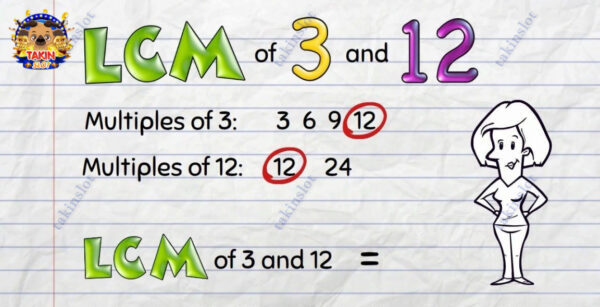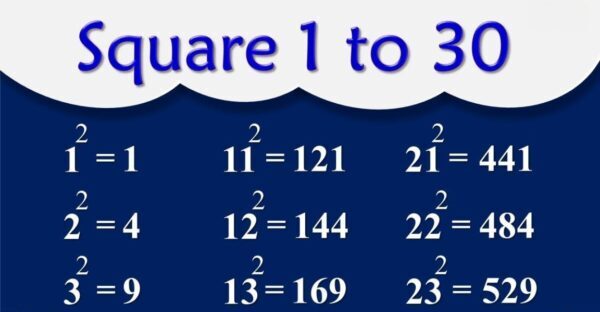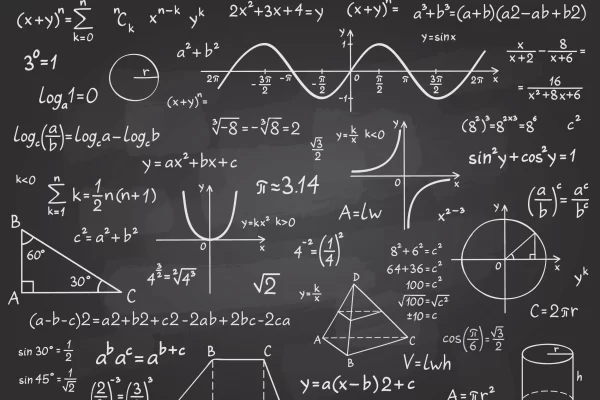HCF Full Form: When encountering the term “HCF,” it may seem straightforward, but sometimes we tend to forget its full meaning. So, let’s clarify that the Full Form of HCF is “HIGHEST COMMON FACTOR.”
- H = Highest
- C = Common
- F = Factor
HCF = Highest Common Factor
HCF is an essential concept in mathematics, typically introduced in elementary school around grades 4 or 5. It represents the largest number that divides two or more numbers without leaving a remainder.
If you’re unfamiliar with or have forgotten the details of HCF, don’t worry. I’ll discuss all the steps involved in finding the HCF of any given numbers. Let’s dive into the Full Form of HCF and explore the associated steps.
HCF Full Forms – From Different Category
| HCF | Highest Common Factor |
| HCF | Haute Coiffure Francaise |
| HCF | Hardcore Championship Fighting |
| HCF | Highest Common Factor |
| HCF | High Capacity Feeder |
| HCF | Host Controlled Family |
| HCF | Hybrid Cross Fire |
| HCF | Hispanic College Fund |
| HCF | Health Care Facilities |
| HCF | High Cycle Fatigue |
| HCF | Health Care Fraud |
| HCF | Hybrid Coordination Function |
| HCF | Hart Communication Foundation |
| HCF | Hutchinson Correctional Facility |
| HCF | Hamilton Community Foundation |
| HCF | High Capacity Feeder |
| HCF | Hundred Cubic Feet |
| HCF | Historic Charleston Foundation |
| HCF | Home Credit Finance |
| HCF | Hospitals Contribution Fund |
| HCF | Halt and Catch Fire |
| HCF | Health Care Foundation |
| HCF | Hawai’i Community Foundation |
| HCF | Host Controller Free |
| HCF | Harbour City Ferries |
| HCF | Honda Canada Foundation |
| HCF | Host Controlled Family |
| HCF | Half Circle Forward |
| HCF | High-Cost Fund |
| HCF | Highland Credit-Strategies Fund |
| HCF | House Conservatives Fund |
| HCF | Host Command Facility |
| HCF | Heparin Cofactor |
| HCF | Healthy Community Fund |
| HCF | Historic Columbia Foundation |
| HCF | Height Correction Factor |
| HCF | Horizon Christian Fellowship |
| HCF | Hardcore Fan |
| HCF | Hybridoma Cloning Factor |
| HCF | Hepatitis C Foundation |
| HCF | Harper Court Foundation |
| HCF | High Carbon Ferrochrome |
| HCF | Hotline Center Foundation |
| HCF | Hot Channel Factor |
| HCF | Hook Content Formula |
| HCF | Higher Cortical Function |
| HCF | Hardened Compact Fiber |
| HCF | Hardware Configuration Facility |
| HCF | Hard Copy File |
| HCF | Host Computer Facility |
| HCF | Human Care Foundation |
What is HCF? HCF Full Form
HCF stands for Highest Common Factor, which refers to the greatest common divisor of a set of numbers when their factors are compared. To determine the HCF of any numbers, several steps need to be followed.
Before delving into the process of finding the HCF, it’s essential to understand the following concepts:
HCF Full Form: What is a Factor?
- How to Find Factors?
- What are Prime Numbers and Composite Numbers?
- What is Prime Factorisation?
- How to Find Prime Factorisation?
- How to Find Common Factors?
Understanding these concepts is crucial for determining the HCF of any given set of numbers. Now, let’s proceed with the steps to find the HCF.
What is a Factor? – HCF Full Form
Factors are the numbers that, when multiplied together, result in a given product. For instance, if 2 and 4 are multiplied to yield a product of 8, then 2 and 4 are factors of 8.
Here are some properties of factors that aid in understanding the process of finding factors:
- 1 is the smallest factor of all numbers.
- 1 is the lowest common factor of all numbers.
- The number whose factors are being found is the greatest factor of itself.
- All factors of a number are less than or equal to the number itself.
How to Find a Factor?
There are two methods to find factors:
- Factor Pair Method
- Factor Pair in Multiplication
- Factor Pair in Division
- Prime Factorisation
For the purpose of this discussion, we will focus on the Factor Pair method, as Prime Factorisation requires a thorough understanding, which will be explained subsequently.
Factor Pair in Multiplication: HCF Full Form
Let’s find the factors of 24 using the Factor Pair method through multiplication. Here’s the process:
- 1 × 24 = 24
- 2 × 12 = 24
- 3 × 8 = 24
- 4 × 6 = 24
The factors of 24 are: 1, 2, 3, 4, 6, 8, 12, and 24. This method allows us to find the factors of a number by examining pairs of numbers whose product equals the given number.
Factor Pair in Division: HCF Full Form
Now, let’s find the factors of 24 using the Factor Pair method through division. Here’s how it works:
- 24 ÷ 1 = 24
- 24 ÷ 2 = 12
- 24 ÷ 3 = 8
- 24 ÷ 4 = 6
- 24 ÷ 6 = 4
- 24 ÷ 8 = 3
- 24 ÷ 12 = 2
- 24 ÷ 24 = 1
Therefore, the factors of 24 are: 1, 2, 3, 4, 6, 8, 12, and 24. This method allows us to identify factors by dividing the given number by potential factors until we reach 1.
The next step is Prime Factorisation. However, before delving into Prime Factorisation, it’s essential to understand the concepts of Prime Numbers and Composite Numbers.
What Is Prime Number and Composite Number?
A prime number is an integer larger than 1 with precisely two divisors: 1 and the number itself. Examples of prime numbers include 2, 3, 5, 7, 11, and 13, among others.
A composite number, conversely, is an integer greater than 1 with more than two divisors. Put differently, a composite number possesses divisors besides 1 and itself. Examples of composite numbers include 4, 8, 10, and so on.
What is Prime Factorisation?
Prime factorisation refers to the process of expressing a number as the product of its prime factors. In other words, it involves breaking down a number into its prime factors.
There are two common methods used to find the prime factorisation of a number:
- Factor Tree Method of Prime Factorisation: This method involves starting with the smallest prime factor of the given number and then continuously breaking down the factors into smaller prime factors until only prime numbers remain at the last step.
- Common Division Method of Prime Factorisation: This method involves dividing the given number by its smallest prime factors successively until only prime numbers remain as factors.
How to Find Prime Factorisation Using Factor Tree:
Begin by identifying the smallest prime factor of the given number.
Continue to factorize each of the resulting factors until only prime numbers are left.
This process is repeated until all factors are prime numbers, resulting in the prime factorisation of the original number.
Factor Tree is a straightforward method for determining the prime factorisation of any number. Now, let’s discuss the second method, the Common Division Method of Prime Factorisation.
How to Find Prime Factorisation Using Common Division:
Prime factorisation through common division is a straightforward method for determining the prime factors of any number. Here’s how it works:
- Begin by dividing the given number by its smallest prime factor.
- Repeat the division process with the resulting quotient, dividing it by its smallest prime factor.
- Continue dividing each quotient by its smallest prime factor until only prime numbers are left as factors.
- Stop the division process when you reach a prime number.
By following this process, you can easily find the prime factorisation of any number. Now, let’s delve into how to find common factors.
How to Find Common Factors:
To determine the common factors of two or more numbers, you first need to find the factors of each individual number. Once you have the factors, compare them to identify the common factors.
For example, let’s find the common factors of 24 and 32:
- Factors of 24: 1, 2, 3, 4, 6, 8, 12, 24
- Factors of 32: 1, 2, 4, 8, 16, 32
The common factors of 24 and 32 are 1, 2, 4, and 8.
Alternatively, you can also use prime factorisation to find common factors. First, find the prime factors of each number individually, then compare and identify the common prime factors.
How to Find the Highest Common Factor (HCF):
Once you have identified the common factors, determining the highest common factor (HCF) is straightforward. Simply look for the highest number that is common to both sets of factors.
For example, let’s find the HCF of 32 and 44:
- Factors of 32: 1, 2, 4, 8, 16, 32
- Factors of 44: 1, 2, 4, 11, 22, 44
The common factors are 1, 2, and 4. Therefore, the highest common factor (HCF) is 4.
In conclusion, you have learned the process of prime factorisation, finding common factors, and determining the highest common factor. If you find any mistakes in this post, feel free to suggest corrections for improvement. If you found this information helpful, consider sharing it with others. Thank you for visiting.
FAQs about HCF Full Form
What is the Full Form of HCF?
The Full Form of HCF is “Highest Common Factor,” where HCF stands for Highest, Common, and Factor. It represents the greatest common divisor of a set of numbers when their factors are compared.
How is HCF important in mathematics?
HCF, or Highest Common Factor, is a fundamental concept in mathematics, typically introduced in elementary school around grades 4 or 5. It represents the largest number that divides two or more numbers without leaving a remainder, serving as a basis for various mathematical operations.
What are Prime Numbers and Composite Numbers?
Prime numbers are whole numbers greater than 1 that have exactly two factors: 1 and the number itself. Examples include 2, 3, 5, 7, 11, and 13. Composite numbers, on the other hand, have more than two factors, including 1 and the number itself. Examples include 4, 8, 10, and so on.
How do you find the Prime Factorisation of a number?
Prime factorisation involves expressing a number as the product of its prime factors. This can be done using methods such as the Factor Tree Method or the Common Division Method, where the number is successively divided by its smallest prime factors until only prime numbers remain.
What is the significance of finding the Highest Common Factor (HCF)?
The Highest Common Factor (HCF) is crucial in various mathematical calculations, including simplifying fractions, finding equivalent fractions, and solving problems involving ratios and proportions. It allows for efficient computation and simplification of mathematical expressions, making it an essential concept in mathematics.




